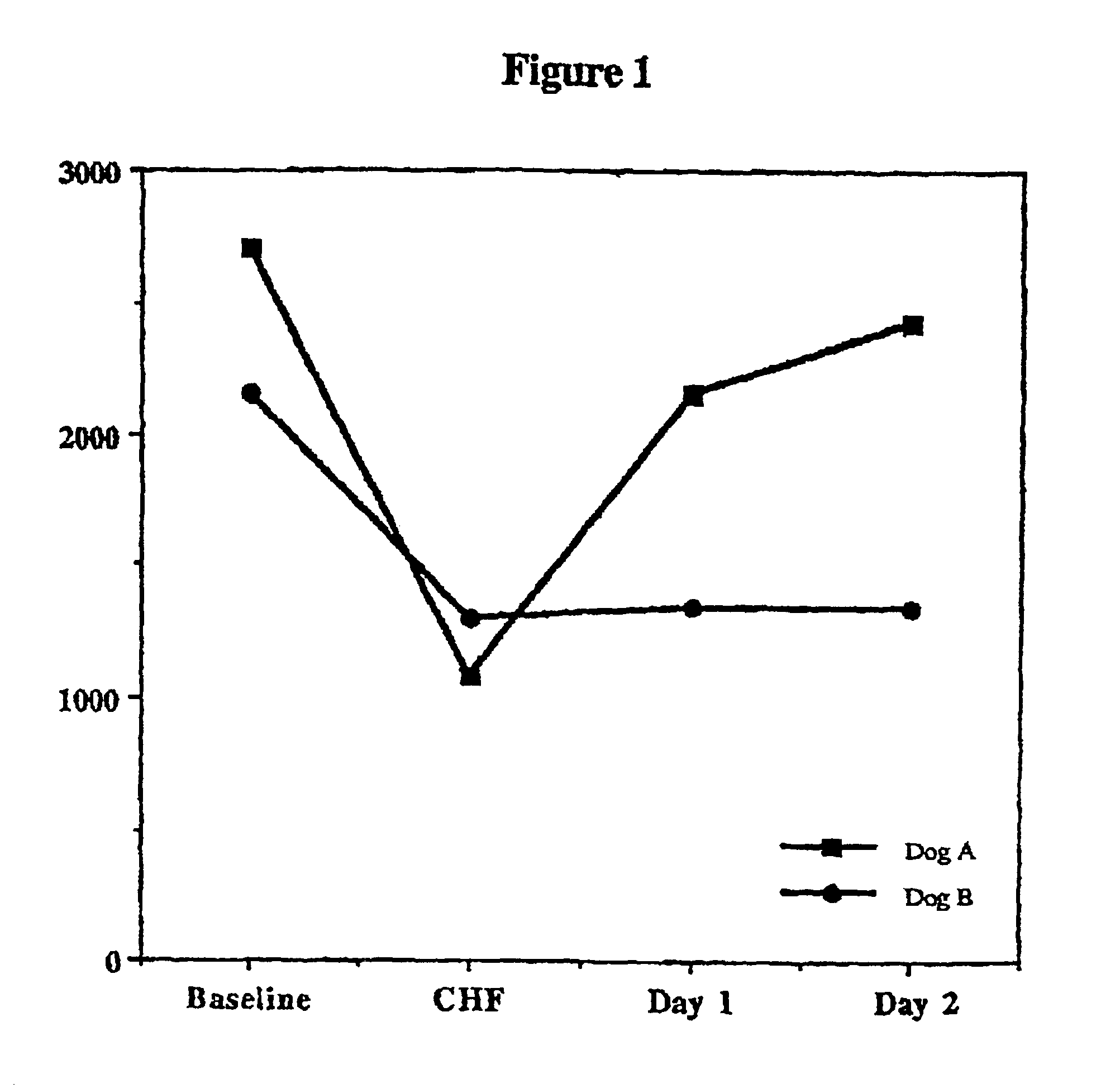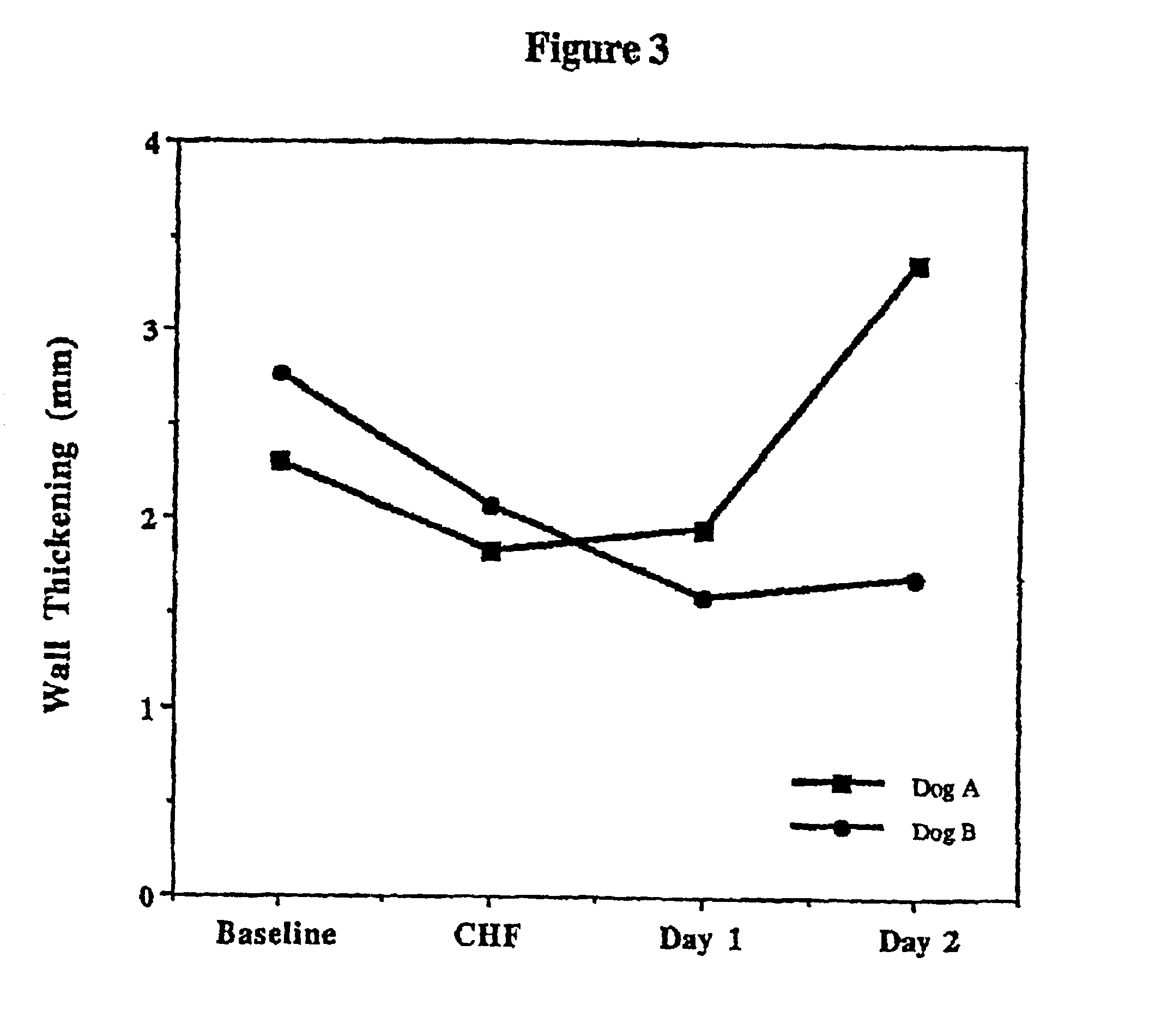Treatment of hibernating myocardium and diabetic cardiomyopathy with a GLP-1 peptide
a technology of hibernating myocardium and diabetic cardiomyopathy, which is applied in the direction of peptide/protein ingredients, extracellular fluid disorder, metabolic disorder, etc., can solve the problems of pulmonary and systemic congestion, heart failure continues to be a major health problem, fatigue, weight loss, etc., to reduce plasma blood levels of norepinephrine, improve clinical outcome, and ease the effect of ischemic stress
- Summary
- Abstract
- Description
- Claims
- Application Information
AI Technical Summary
Benefits of technology
Problems solved by technology
Method used
Image
Examples
example 1
[0053]Beagle dogs were fitted with telemetry devices that permit long-term ambulatory data collection in conscious animals. These devices measured LV pressure, myocardial oxygen consumption (MVO2, an expression of myocardial efficiency), coronary flow (CBF), and cardiac output (CO). The dogs were “paced,” such that heart rate was forced up to about 240 beats per minute, for 3-4 weeks, which induces moderate HM in a predictable manner. This HM dog model is an accepted model for assessing the effectiveness of treatments for HM. Kiuchi et al., “Myocardial beta-adrenergic receptor function during the development of pacing-induced heart failure.”J. Clin. Invest. 91: 907-914 (1993).
[0054]Following induction of HF, five dogs were given an intravenous infusion of rGLP-1 (7-36) amide (1.5 pmol / kg / min) for 48 hours and four dogs served as controls. During the treatment period, “pacing” was discontinued. Plasma catecholamines were assessed before and after infusion, along with LV pressures, co...
PUM
| Property | Measurement | Unit |
|---|---|---|
| reduction | aaaaa | aaaaa |
| mechanical performance | aaaaa | aaaaa |
| pressure | aaaaa | aaaaa |
Abstract
Description
Claims
Application Information
 Login to View More
Login to View More - R&D
- Intellectual Property
- Life Sciences
- Materials
- Tech Scout
- Unparalleled Data Quality
- Higher Quality Content
- 60% Fewer Hallucinations
Browse by: Latest US Patents, China's latest patents, Technical Efficacy Thesaurus, Application Domain, Technology Topic, Popular Technical Reports.
© 2025 PatSnap. All rights reserved.Legal|Privacy policy|Modern Slavery Act Transparency Statement|Sitemap|About US| Contact US: help@patsnap.com



